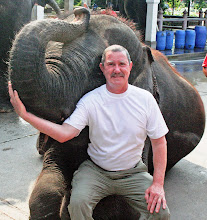Each operator license level requires passing a written test with a score of 74% or greater. I have sat for all three exams, and I am now licensed as an Extra. Each Ham has a radio call sign. The call sign must be used in every on air communications. Chris, Bill, and I have traded in our FCC, randomly generated call signs, and we have each received Vanity call signs. Chris is N7CGD, Bill is K7WGD, and I am N7RFD. Vane, yes, but it is easier to remember you own initials.
Chris has been a ham for several years. He has become expert with the digital, and computer interfaced aspect of radio communications. Bill, and I are so far happy with the audio part of ham operations. On the horizon for all of us is to learn how to operate the image aspect of ham radio. That is in using slow scan TV transmission to send photos. I have mastered being able to send, and receive emails via my radio and computer. That is done without my having access to the internet.
One of the first things a new Ham discovers is; if I build a better antenna, they will be heard. There are at least a quarter zillion types of antennas available to the ham. The most basic, however, is a wire dipole. The Scots learned early; why buy it, if you can make it. That is also the less expensive approach. As a result, the two households have engaged in designing and building multiple wire antennas. We have enjoyed many successes. My main interest is in creating antennas which can be deployed at RV camp sites with convenience and stealth.
Height is an antenna's best friend. In an open camping area one must resort to using devices such as extendable fiberglass poles. We each have one and it will put a wire over 30' into the air. This is my pole set up at our Sunriver condo.
Recently, Chris, Bill, and I went to Crater Lake for a morning of transmissions from a National Park. Each National Park has a designating tag. Crater Lake's tag is NP13. One of the many things Ham's do is collect things. Have you logged contact with someone in each state. How many countries have you communicated with. How many National Parks have you reached. Etc. Within Oregon, have you visited each county. The lists go on, and on. Paper awards are issued by national organizations when certain achievements are met.
At Crater Lake we operated out of the Vanaroo. We set up our antenna at a pullout on the western rim road.

Crater Lake required the use of the extendable pole for us to be able to string the antenna. In this case we hung the wire as an inverted vee and pegged the ends to the ground. The Sunriver set up could have used a tree limb instead of the flex pole. However, climbing one of the backyard pines was out of the question. What I needed for this ham environment was a way to get the wire up, and over a tall branch.
What I needed was an Antenna Buddy. I set out to build a buddy. This would require a light weight line and a way to get that line over the limb and to be able to retrieve the end of the line. The design began to take shape. I needed a fly casting reel, some high strength fishing line, and a lead weight on the end. If I attached the weight with a swivel connector, I could then remove the weight and attach the antenna wire to the swivel. The wire could then be pulled back over the limb. The wire can be secured to the base of the tree with a length of paracord. The only hurdle remaining was how to get the weight over the limb. I had the solution hanging in the Man Cave.
Now. Take me to a forested RV park.



No comments:
Post a Comment